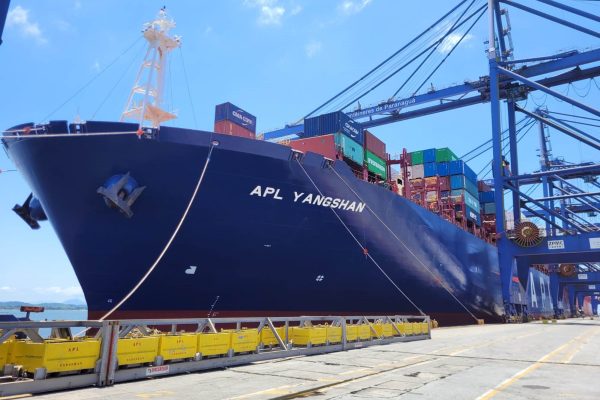São Paulo – Brazilian companies are finding in e-commerce a quick way to access international markets. New brands like Coffee ++, of Minas Gerais, are born digital, blazing an online trail to reach foreign consumers. But how can e-commerce be used to export? Experts describe a relatively simple landscape but recommend paying attention to logistics, technology, and digital marketing.
Established in 2020, specialty coffee firm Coffee ++ started its online sales path in the domestic market. The company emerged with its own e-commerce and a focus on selling to Brazilian consumers. Two years later, it started exporting to the United States via Amazon.

“Historically there have been more barriers in Brazil to sell in brick-and-mortar stores than online. So, we’ve started since the beginning selling online to reach more people,” explains Coffee ++ e-commerce director Tiago Alvisi.
On the company’s website, four types of products are sold: ground coffee, coffee beans, coffee capsules, and drip coffee. The raw material is bought from Brazilian farmers.
After catering to all Brazilian states and being sold in major supermarket chains like St. Marche and others, the brand started being resold on various e-marketplaces in Brazil like Amazon, Mercado Livre, Shopee, Magazine Luiza, and Americanas.
“We sell on other websites because we like to give the customer options on where to buy. Some buyers only buy on Amazon, while others only use Mercado Livre, so these e-commerce platforms end up serving as a marketing tool for people to get to know our brand. We respect the prices so that they aren’t much higher or lower in a particular e-commerce,” says Alvisi.
In 2022, aiming to cater to new markets, the specialty coffee brand from Minas Gerais started exporting to the U.S. “As we didn’t know the U.S. market, we struck a partnership with a company from there that trained us, explained the market to us, and acted as a go-between for us to get there. Since we were already selling on Amazon Brasil, it wasn’t hard to start selling via the U.S. Amazon. The rules were quite similar, and as for logistics, we sent a certain amount of products to the Amazon to facilitate it, and when the purchase is made, they distribute them,” says e-commerce director of Coffee ++’s.
How to sell via e-commerce
Before starting to sellon different e-commerce websites and e-marketplaces, Alvisi recommends that companies perform a through analysis of the operations and rules of each platform.
“Some e-marketplaces will retain 15% of the value sold by the company, while others will retain a smaller percentage. For you to sell on these websites, you must have a well-designed logistics chain to meet the delivery time that’s acceptable to each destination. You can’t take 20 days to deliver when your competitor takes only five days,” says Alvisi.

When you are in an e-marketplace like Amazon, Alvisi stresses the importance of participating in the campaigns of the brand such as Amazon Prime Day to be able to stand out as a reliable company. Amazon Prime Day is a deal event exclusively for members.
“E-marketplaces operate all in a similar fashion. You have to understand the technology of the system, upload images and descriptions of your products, put prices. The bureaucratic part, of documentation, is usually quite simple.”
Exporter’s association AEB chairman Arthur Pimentel says the Brazilian entrepreneurs should pay attentionto some aspects before entering the medium.
“International trade is very dynamic, and the opportunities are created day after day, so care must be taken. E-commerce can’t be just an online store – it has to be a new way to sell. It must be the sum of sales channels, social media, marketing etc.”
As it involves various fronts, you have to do the math to understand if the company is really prepared. Investments in logistics and social media are some of those that require attention, says AEB’s chairman.
What to take into account
When the company starts operating in a new e-commerce, you have to have a very well-established staff and structure to have the capacity to meet the demands of all.
“If you have a fabric distribution company, for example, that only caters to the Southeast region of the country but wants to cater to the Northeast region, too, you have to update your team to meet the demand that is about to grow. If it is the same language, a similar audience, few adaptations will be necessary,” says Roberto Kanter, economist and MBA professor at Fundação Getulio Vargas specializing in retail.

When the brand wants to export, though, retailers have to understand the consumer behavior, whether they will have to implement an on-site plant or do a previous stock, develop a distribution strategy, wheter it will be a partnership with a local company.
“You have to carry out a study on the region before starting to sell overseas. You can’t trade just like you do in Brazil as each country has its own particularities. If you know there is a potential market for your product, you’ll follow a step-by-step to develop your brand there, starting with an understanding on the regulation and documentation in the country of interest,” says Kanter.
If that is not possible, to understand the consumer the economist and MBA professor at FGV recommends that the entrepreneur spend some time in the county of interest, and make some deals with local associations and government.
As it is ever shifting, this market presents a series of opportunities. “When it comes to forms of trade that involve the brand and end consumers directly, like e-commerce, there are very high expectations for this year,” says Pimentel.
Exporting companies
Brazilian trade has grown year after year, and one of the reasons is the growing number of companies operating abroad. Last year, exports from the country reached an unprecedent result. Compared to 2022, they grew by 1.7% according to data from the Ministry of Development, Industry, Trade and Services. The value of exports hit USD 339.67 billion. Compared to 2022, the number of exporting firms grew by 2% in 2023 to 28,500 companies.
*Report by Rebecca Vettore, especially for ANBA
Translation by Guilherme Miranda




